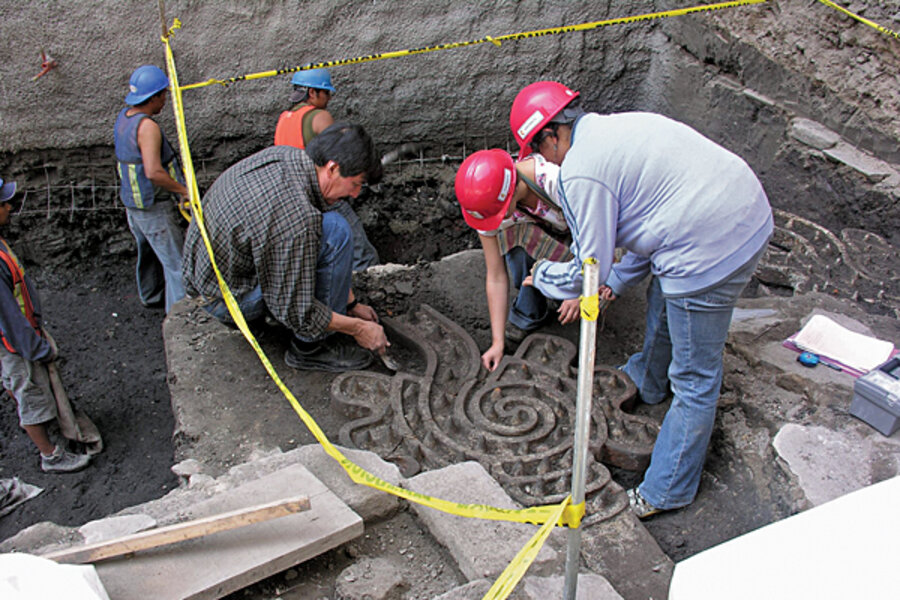All Aztecs went to school? A lesson for Mexico.
Loading...
| Mexico City
When the Spanish cultural center in downtown Mexico City wanted to expand, excavations uncovered a Smith & Wesson revolver, a partial figurine of Jesus – and the ruins of an ancient Aztec school.
The school, called the Calmecac or "house of the lineage" in the Aztec language of Nahuatl, was unearthed in what was once the heart of the Aztec empire, Tenochtitlan, now a dizzying slice of the megalopolis of Mexico's capital. The ruins went on display for the first time in a recently opened exhibit in the cultural center's new wing.
The school, built between 1486 and 1502, was a sacred place of study for the children of Aztec nobility.
And though commoners inside the school walls would have been few and far between, the Aztecs of central Mexico played an important role in the world of education.
They are believed to be among the first to offer universal education at a time when other societies reserved study only for the privileged.
"All Aztec children went to school," says Harry Patrinos, the lead education economist at the World Bank. "It all disappeared after the [Spanish] conquest, and it took a long time before the colonies had any education system."
How the ancient Aztecs might shudder, then, to look at Mexico's contemporary education statistics. Today, Mexico's indigenous make up about 10 percent of the population, and while their access to education has increased in recent years, they remain far behind the rest of the Mexican population. In 2000, Mr. Patrinos's research shows 73 percent of indigenous women and 68.4 percent of indigenous men age 15 and older had less than primary schooling.
"Indigenous schools," part of Mexico's public school system but earmarked for bilingual education services, have helped to improve access but don't have the resources to fully bridge the divides. "The indigenous schools score among the lowest," says Patrinos. Many indigenous communities are still rural and those children might only have a chance at secondary school through distance learning, which also sets them back, he says.
Among the excavated volcanic rock platforms in the Calmecac school, Aztec students were once trained to become governors, elite warriors, or religious figures.
"From historical records, we know that the children of the nobility were brought here to undertake rigorous study.... They learned moral values and customs to become the future leaders," says Raul Barrera, who directs the urban archaeology program for the National Institute of Anthropology and History (INAH), the body which must approve renovations or new buildings in Mexico's downtown.
"This is one of the most important finds in terms of understanding life in the sacred grounds [of Tenochtitlan]," Mr. Barrera says.
Excavation by INAH took two years, and archaeologists dug, with pick and shovel, nearly 40 feet underground. They found fragments of the school's floor, staircase, and seven decorative clay pieces, nearly eight feet in height, in the shape of snail shells, which are believed to have adorned the school's roof.
But the work itself, carried out as a joint effort between Spain and Mexico, is also a symbol of a more harmonious, modern Mexico. The project also features relics from three historical periods, including a stone representation of Ehécatl, the ancient god of wind; candlesticks from the colonial period; and even a glass bottle of imported shoe polish, not to mention a few Coca-Cola bottles.
"The whole history of Mexico can be seen in one city block," says German Rostan, project coordinator for the Cultural Center of Spain.







